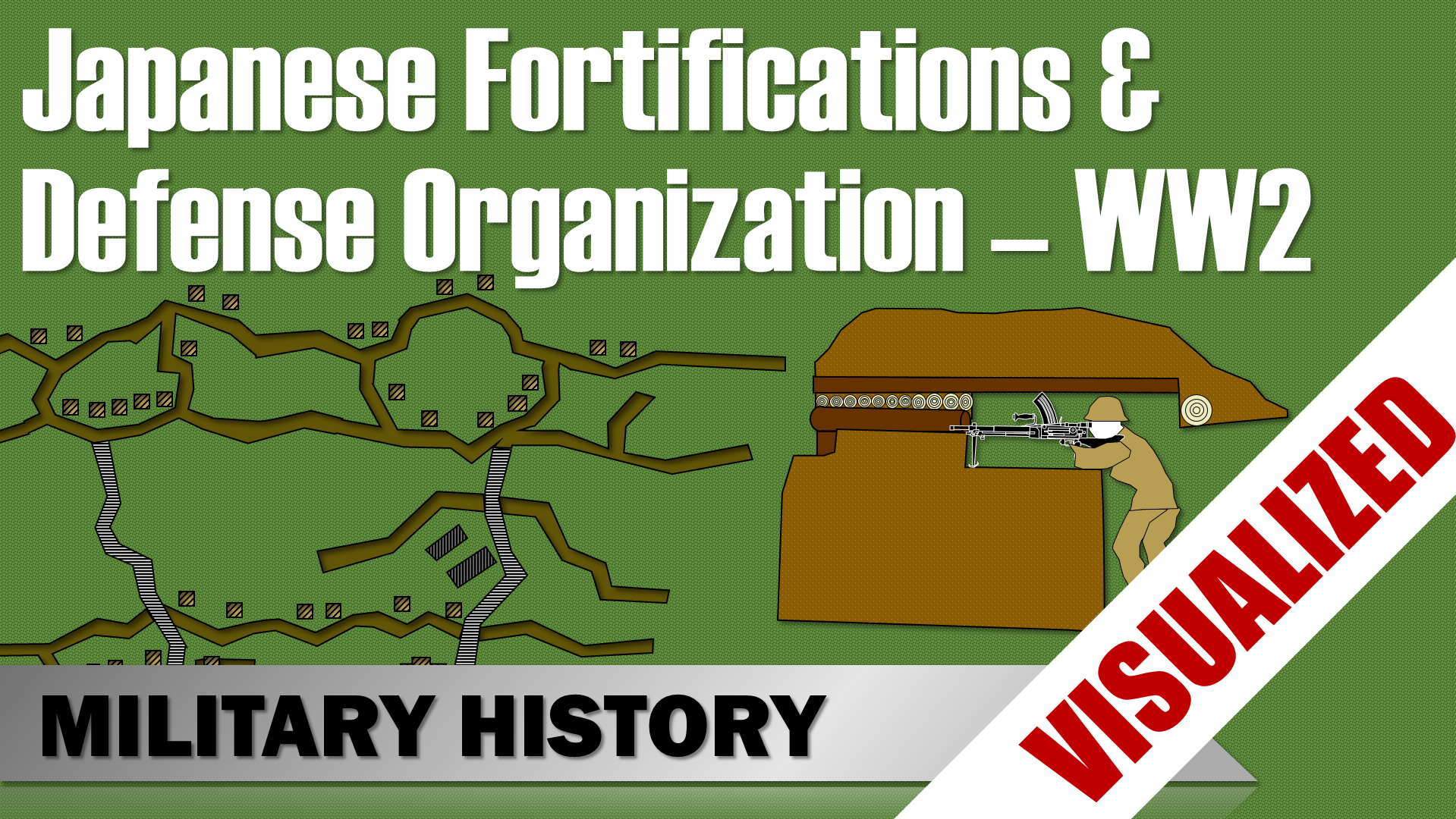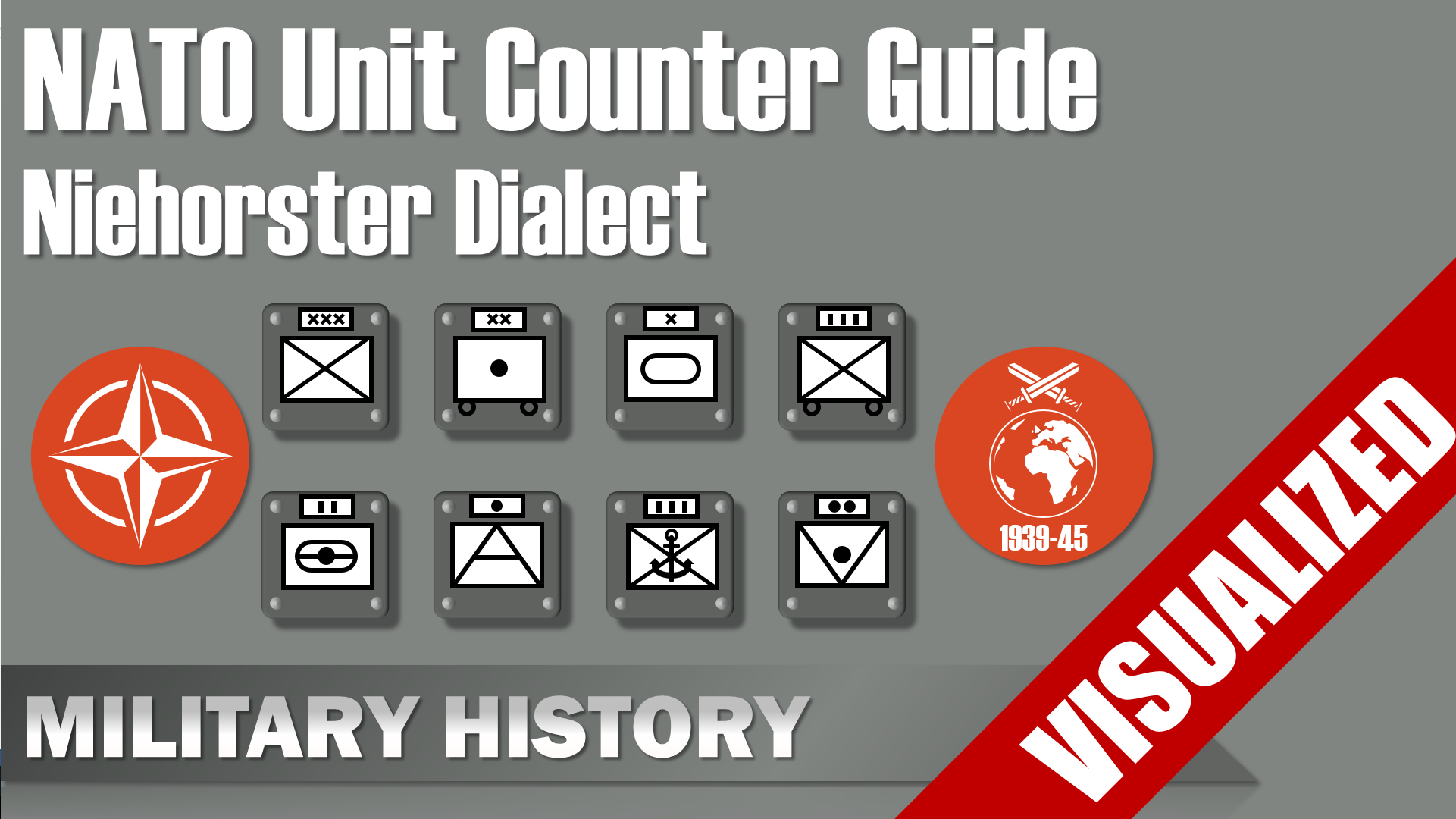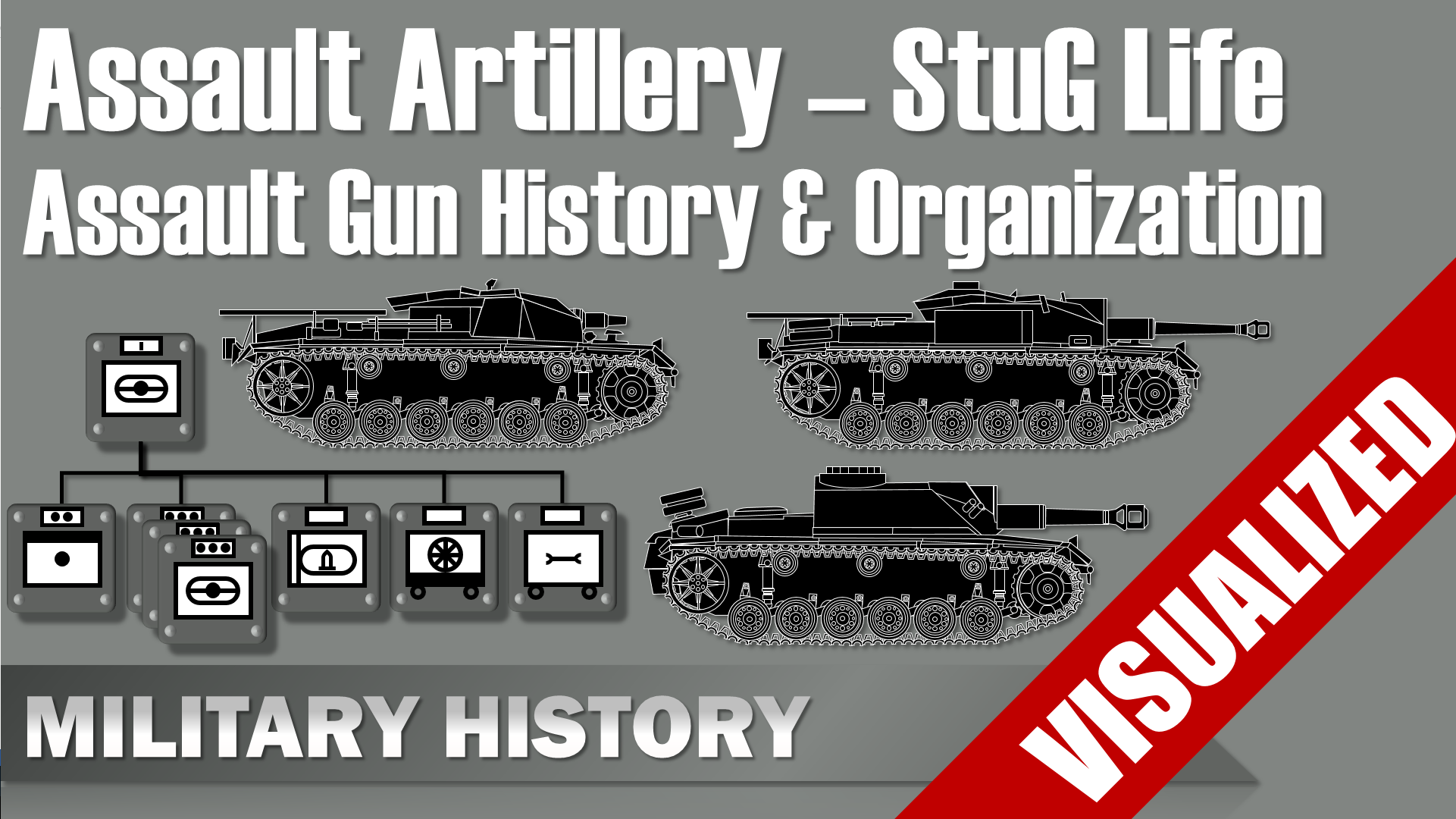Intro
Time to take a look a German Squad Tactics in World War 2. Two important points, first a squad rarely acted alone on the battlefield, it was used in coordination with other squads of its platoon and/or company. Second, the main source for this is the US Manual “German Squad in Combat” from the Military Intelligence Service released in January 1943. It is a partial translation of a German publication and using other sources, I could correct some small errors and inconsistencies, nevertheless take everything with a grain of salt, especially since manuals and combat realities often differ.
The German Squad
Let’s begin with organization and armament.
Structure and Armament
The German Infantry Squad in World War 2 for the most part consisted of 1 squad leader and 9 infantry men, thus a total of 10 men.
Initially all men besides the machine gunner and his assistant were equipped with the “Karabiner 98 kurz”, the German standard rifle, even the Squad leader, yet around 1941 he was issued a MP40 submachine gun with 6 magazines of 32 shots each.
The machine gunner was equipped with an MG 34 and later on with an MG42, he was also issued a pistol and an ammo drum with 50 rounds.
The assistant gunner carried 4 ammo drums with 50 shots and a weight of 2.45 kg each. Additionally, one ammo box with 300 rounds weighing 11.53 kg. He was also issued a pistol.
There was also an ammo carrier assigned to the machine gunner, whose job was to carry and supply ammunition. He carried two Ammo boxes with 300 rounds each. Unlike the assistant he was issued a rifle not a pistol.
Note that the “German Squad in Combat” indicates a pistol instead of a rifle as a weapon for the ammo carrier, but it seems that this is incorrect and is probably from an old layout, when the squad consisted of an LMG and rifle team. (Sources: Buchner, Alex and http://www.wwiidaybyday.com/kstn/kstn131c1feb41.htm)
Now, each rifleman had around 9 clips for his rifle with 5 shots each, thus 45 rounds. This was the regular amount, according to Buchner more rounds were issued in case of a combat situation. Also the second-in-command was armed the same way as regular rifleman.
Note that the men except for the squad leader were numbered, whereas the machine gunner was the “Schütze 1” or rifleman number 1, which gives a good indication of his importance.
Hence, in total the squad had 1 light machine gun, 1 submachine gun, 2 pistols, 7 rifles and several hand grenades, which were issued depending on the situation. (Sources: Buchner, Alex: Handbuch der Infanterie 1939-1945, S. 15-16; German Squad in Combat: p.1-3 ; Töpfer: p. 5-7; Bull: p.23-24)
Roles/Duties and Responsibilities
The roles/duties and responsibilities of each squad member were as follows:
The Squad leader was commanding the unit, he directed which targets the LMG should engage and if the combat situation permitted also the rifle fire. His responsibilities outside of combat included that the equipment of the unit was in order and that enough ammunition was available.(The German Squad in Combat: p. 1)
The Second-in-Command was his assistant and was in command during the absence of the Squad leader. His responsibilities were to communicate with the Platoon Commander and also adjacent squads, thus he was vital for the coordination. (The German Squad in Combat: p. 3)
Next is the Machine Gunner, he operated the light machine gun and was responsible for taking care of the weapon. (The German Squad in Combat: p. 2)
His assistant would help him with setting up the MG, supply ammo and assist him in combat. Usually he would be left of the gunner or to his rear. He had to be ready and close enough to support the gunner with tasks like changing the barrel or fixing jams. And in case the gunner couldn’t continue operating the LMG the assistant would take his role. He was also responsible to take care of the weapon. (The German Squad in Combat: p. 2-3)
The ammo carrier was responsible for inspecting the ammo, refilling fired ammo belts and checking for left ammunition in case of a position change. He usually stayed in the rear and in cover, but could act as a rifleman if necessary.( The German Squad in Combat: p. 2-3; Töpfer: p. 6)
The regular rifleman’s duty was to participate in combat with his rifle and bayonet. The riflemen formed the assault part of the squad. Thus, if necessary assaulting the enemy position with grenades and bayonet. Although not officially designated, they would also serve as ammo carriers to a varying degrees. Additionally, some were designated grenade carriers and/or throwers.( The German Squad in Combat: p. 2-3; Töpfer: p. 6)
Formations
Now let’s take a look at formations. The basic close order formations were the squad line or “Reihe”, the squad column or “Kette” which was basically a 90 degree turn of the previous and of course the Squad in March order. (The German Squad in Combat: p. 4)
As you can see the machine gunner with his assistants is always at the very front, he was the key member of the squad, which is also indicated by his designation “Schütze 1” or “infantry man number 1”. (base man) (The German Squad in Combat: p. 5)
These were the close order formations that were not suited for dangerous situations.
Squad Column Extended Order – Schützenreihe
Close-Order formations were abandoned if the situation changed due to terrain, hostile activity or other circumstances. The basic extended order formations were the Squad Column or “Schützenkette”and the Skirmish line or “Schützenreihe”. The squad column in extended order was not a straight line, instead the soldiers used terrain for cover, although the principal order of the line remained. Note that the second-in-command was at the end, ensuring that the squad stays together. (The German Squad in Combat: p. 5-6)
Skirmish Line – Schützenkette
The skirmish line was used if the firepower of the whole squad was necessary. In this case the riflemen move to the left and right of the machine gunner, who remained at a central position. The forward half of the riflemen moved to the right and the other half to the left. Alternatively, an echeloned right or left deployment was also possible, in this case the all men moved to the right or left of the machine gunner. The distance between the men was about 3.5 m ( 12.5 ft) (Original: 5 paces). Note that the squad leader had no fixed position in the formation.
Generally speaking, there was a standard approach for everything, like the squad line formation or how to deploy into a skirmish line. This means that any deviations from the standard must be explicitly ordered. (The German Squad in Combat: p.5- 8)
Leadership
In terms of leadership the translated manual states that leading by example is essential. It is explicitly stated:
“In order to be a leader in the field, a superior must display an exemplary bearing before his men in the moment of danger and be willing, if necessary, to die for them. The weak and vacillating are then guided by his example and by his disregard of self in accepting privations and dangers.” (The German Squad in Combat: p. 10)
Squad in Offensive Combat
Now, let’s take a look at the squad in offensive actions. It is very important to note, that the squad in offensive combat would not act alone, but as an element of its platoon. Note that each platoon contained usually 4 squads. So let’s look at the different stages of offensive combat.
Stages of an Attack
The stages are as follows: development, deployment, advancing, attack and penetration. Note that most other sources use less stages and the transition from one stage to another can be quite fluent or blurry. (German Squad in Combat: p. 32-47)
Development
The development phase is the first step in the preparation of an attack. The rifle company left their marching route and broke up into 3 platoons. Those platoons themselves separated into 4 squads. Yet, the squads remained in close formation. The machine gun and other important equipment was now carried by hand and on carts anymore. (German Squad in Combat, p 32-33)
Deployment
Next was the Deployment phase, which was about organizing the troops into combat formations. Usually, the squad was deployed right after the deployment of the platoons. The squad leader may have received his orders directly from the platoon leader or acted independently based on the mission of the platoon. (German Squad in Combat, p 35-36)
Advancing
Now, since the units were now in battle formations the advance phase began. The advance was ideally performed in squad column with the light machine-gun on the front. This would allow rearward supporting machine guns and other weapons to fire safely past the advancing squads.
If the squad was under effective enemy fire, the squad needed to use its own fire to support its movement by achieving fire superiority. Fire and movement should be employed, which means that one part of the squad fires to cover the movement of the other part of squad. This principle can also be used on a larger scale, where one squad covers another squad. (German Squad in Combat, p 36; Töpfer: p. 20-21)
If areas were covered by enemy artillery fire, they would have been avoided if possible, if not these areas needed to be crossed during firing pauses in quick rushes. Generally, it was recommend to use rushes, when the situation and enemy fire did permit them. (German Squad in Combat, p. 36-37)
Attack
Following a successful advance of the squad, the attack phase commenced. Although the difference is not so obvious at first, since both stages may include firing upon the enemy and also advancing. Yet, during the advance phase firing is only employed if it is necessary, whereas in the attack the firing was usually a crucial element.
Initially the fire fight was started by heavy weapons from supporting units, like artillery, infantry cannons and heavy machine guns, these weapons focus on the destruction or neutralization of strongpoints. The squad’s machine gun was also used, the riflemen depending on the situation. Yet, it is noted:
“[…] it is not the task of the riflemen to engage in fire fights of long duration in order to gain fire superiority. In the attack, in the final analysis, it is the vigorous shock power of the riflemen with bayonet which overcomes the enemy.”(German Squad in Combat, p 39-40)
Hence, at this point the squad still advanced. Generally, the squad should move as much forward without firing as possible, only if this wasn’t possible anymore it should engage the enemy. (German Squad in Combat, p, 39- 41)
Penetration
The final stage is the penetration into the enemy positions. It is usually initiated around 100 m away from the enemy positions. (Töpfer: p. 21)
“In penetration, the whole group rushes or fires as a unit. If possible, the platoon leader employs several squads advancing from various directions against the objective. In this way the defensive fires of the enemy will be scattered. This form of attack is no longer carried out by the squad, but by the platoon.” (German Squad in Combat, p 42)
It is important the maximum amount of fire is provided during an assault. For this reason the LMG should be positioned to fire into the enemy position without risking friendly fire. If such a position is not attainable, the LMG should be used during the assault and fired from the hip. Furthermore, neighboring units should provide additional firepower and/or support the assault by a complementary attack from another direction.
Once the riflemen closed in on the enemy position, the designated grenade throwers on command would use their grenades and the squad stormed the position under the lead of the squad leader. (Töpfer: p. 21; German Squad in Combat, p 42-43)
Example for an Assault on an enemy position
To give you a better idea, how two squads with supporting elements would assault an enemy position, here is a little illustration, based from an original German manual from what I can tell, but the document I got it from provided no direct reference.
Here you can see the German positions on the left side and a fictional enemy on the right. Both positions are reinforced by barbed wire. There is a mortar pit with a light mortar and in the not visible rear position another light and heavy mortar are available. The mortars would attack the following areas of the enemy position. To support the attack the two heavy machine guns would be positioned on the flanks. In the center a squad with a light machine gun would fire at the enemy position. The assault itself would be performed by two assault squads that were supported by light machine guns, the first squad would directly assault the enemy position, whereas the second one would attack the rear and cut it off from reinforcements. (Töpfer: p. 21)
Once the assault was successful, the squad leader would ensure discipline and prepare for a potential counter-attack.
Sources
MILITARY INTELLIGENCE SERVICE: THE GERMAN SQUAD IN COMBAT
Töpfer, Harry: German Tactical Manual
Bull, Stephen: World War II Infantry Tactics – Squad and Platoon
WWII German Map Symbols by James Byrne
https://en.wikipedia.org/wiki/Pace_(unit)
Oberkommando des Heeres: Hinweise für die Ausbildung der Infanterie auf Grund der Erfahrungen des Ostfeldzuges, H. Qu. O.K.H., 1.3.1942
http://wwii.germandocsinrussia.org/de/nodes/1212#page/2/mode/inspect/zoom/4
![[Tanks 101] Armor Protection 1920-1980 – Features and Characteristics](http://militaryhistoryvisualized.com/wp-content/uploads/2016/08/tanks_101_armor_protection_1920_1980.png)
![[Weapons 101] Trebuchet – Traction & Counterweight – Medieval Equipment](http://militaryhistoryvisualized.com/wp-content/uploads/2016/08/trebuchets_traction_counterweight_medieal_weapons_101.png)

![Comparison German Field Army 1917 vs 1944 [Document]](http://militaryhistoryvisualized.com/wp-content/uploads/2016/07/comparison_german_field_army_1917_vs_1944_document.png)

![[Unit 101] Archer and Bow (Medieval)](http://militaryhistoryvisualized.com/wp-content/uploads/2016/07/archers_and_bows_medieval_units_101.png)
![[Battle of the Bulge] Why were the Allies surprised?](http://militaryhistoryvisualized.com/wp-content/uploads/2016/07/why_were_the_allies_surprised_battle_of_the_bulge.png)

